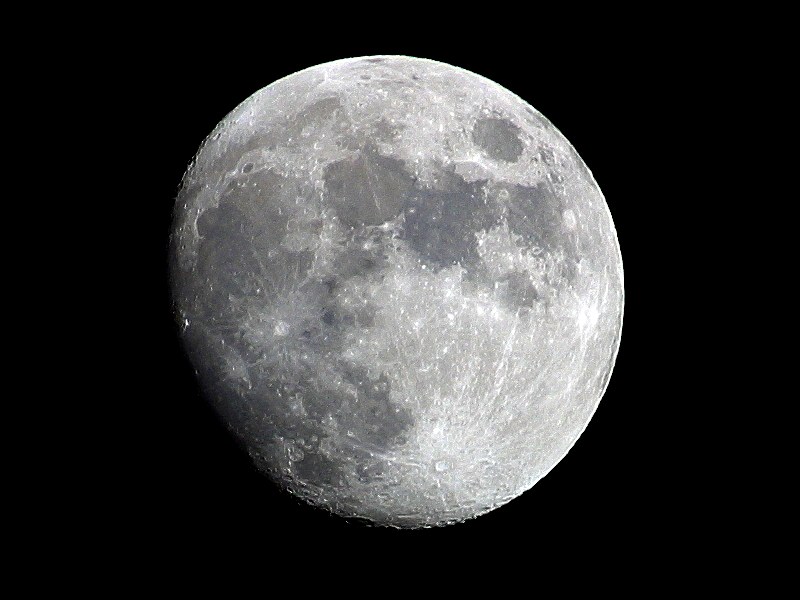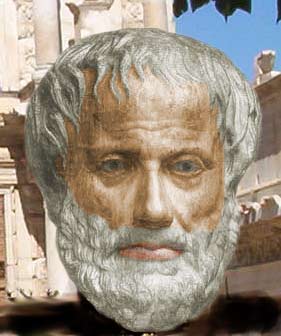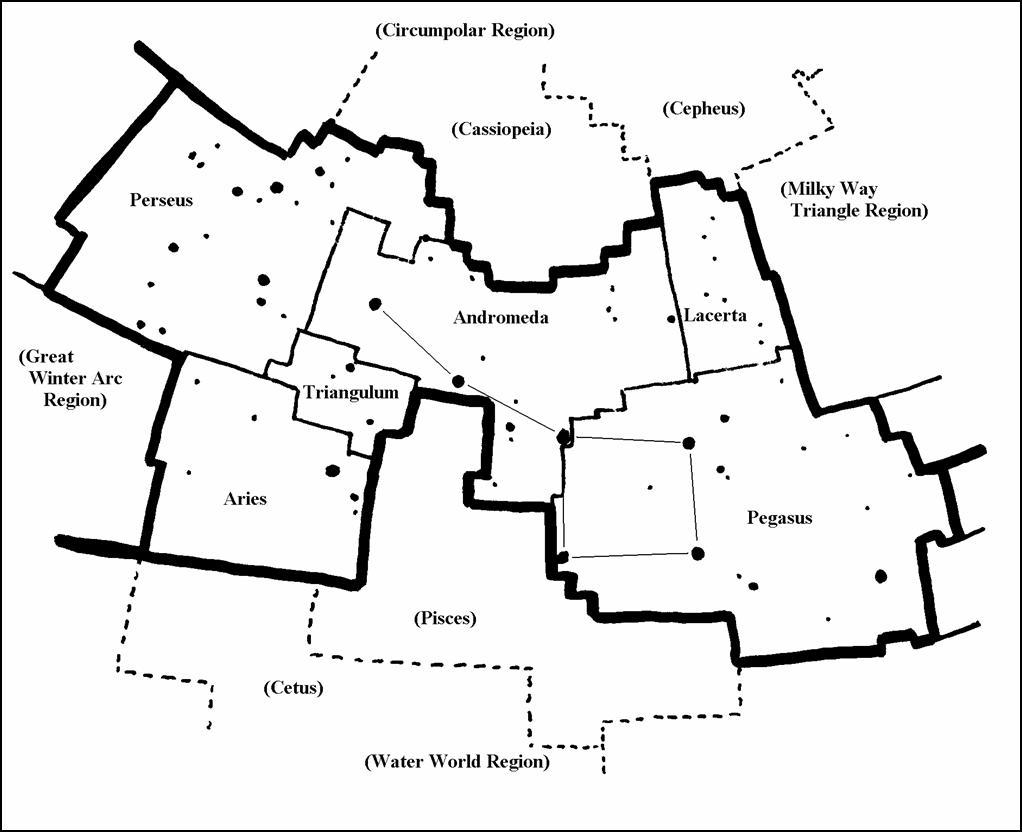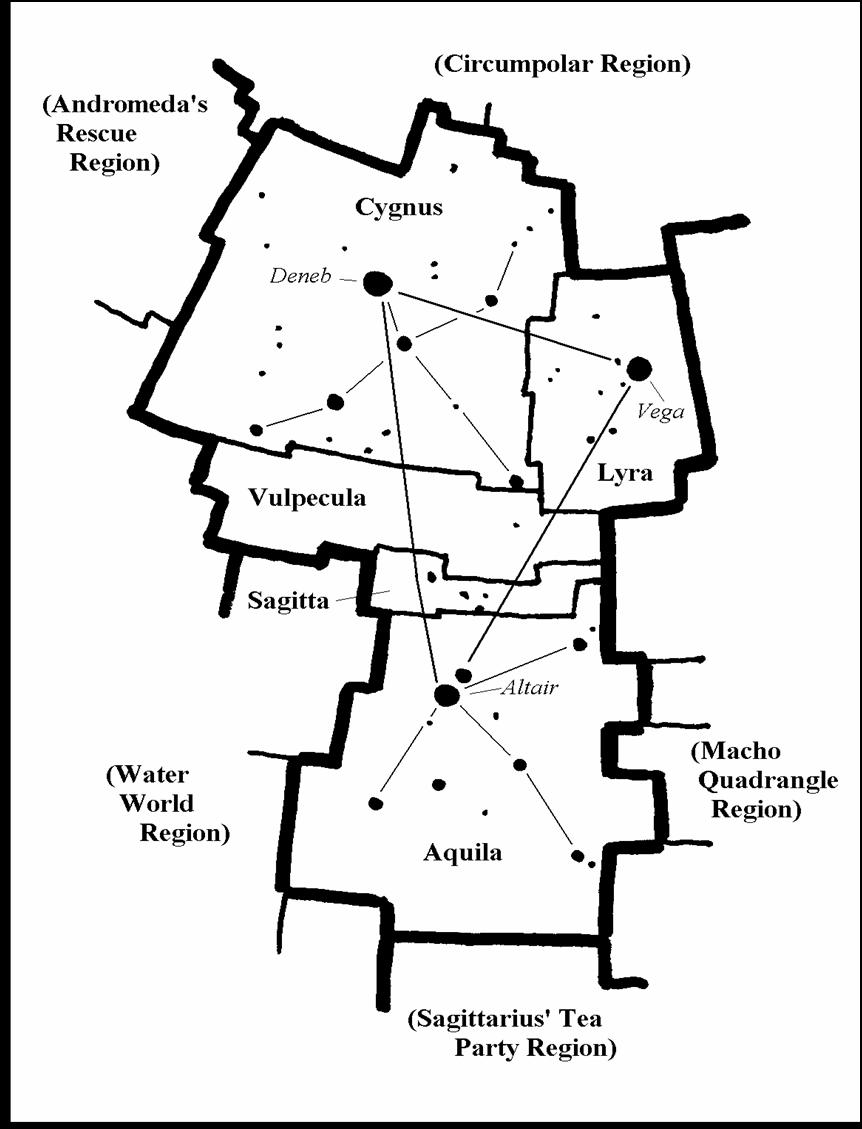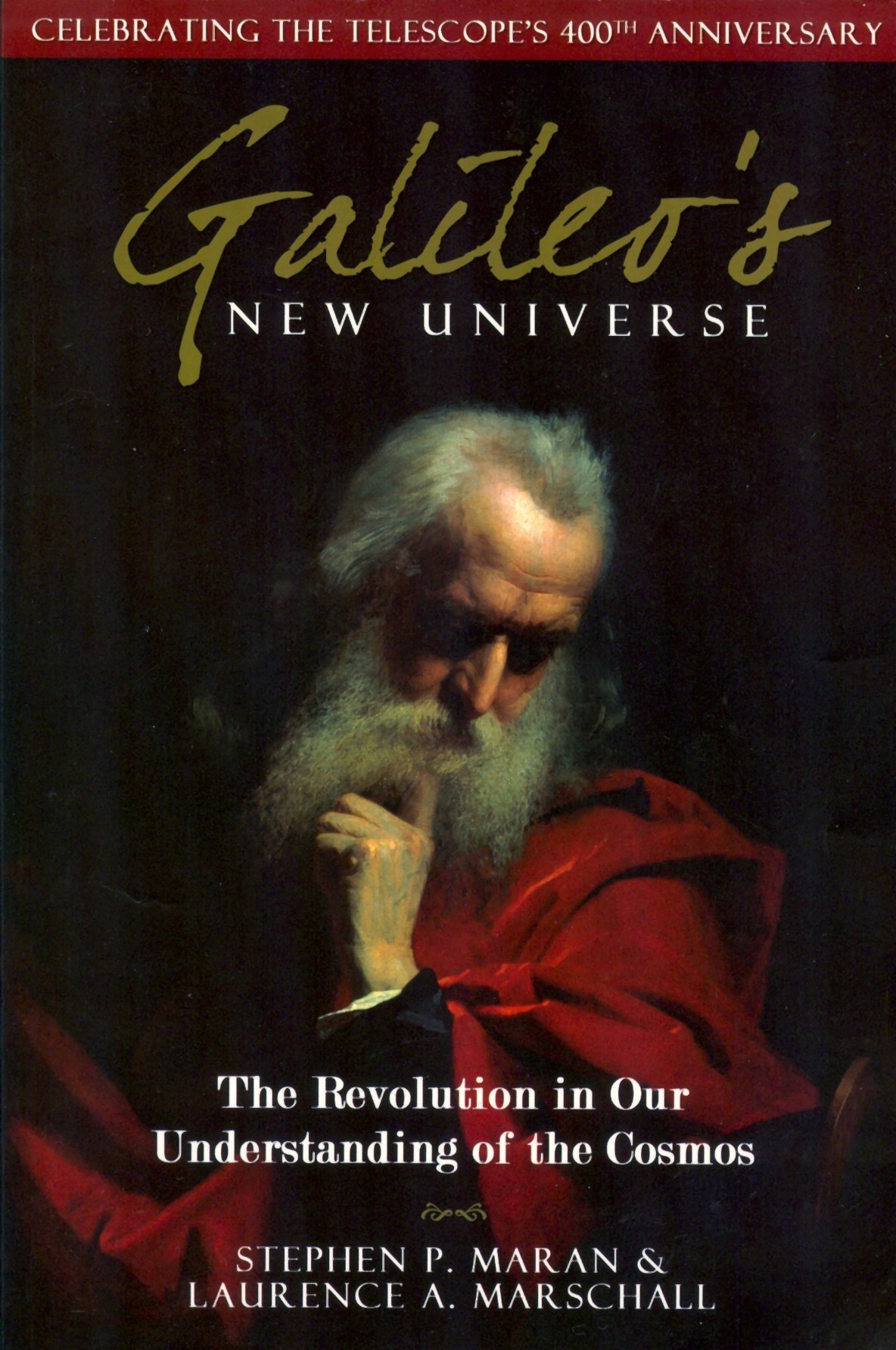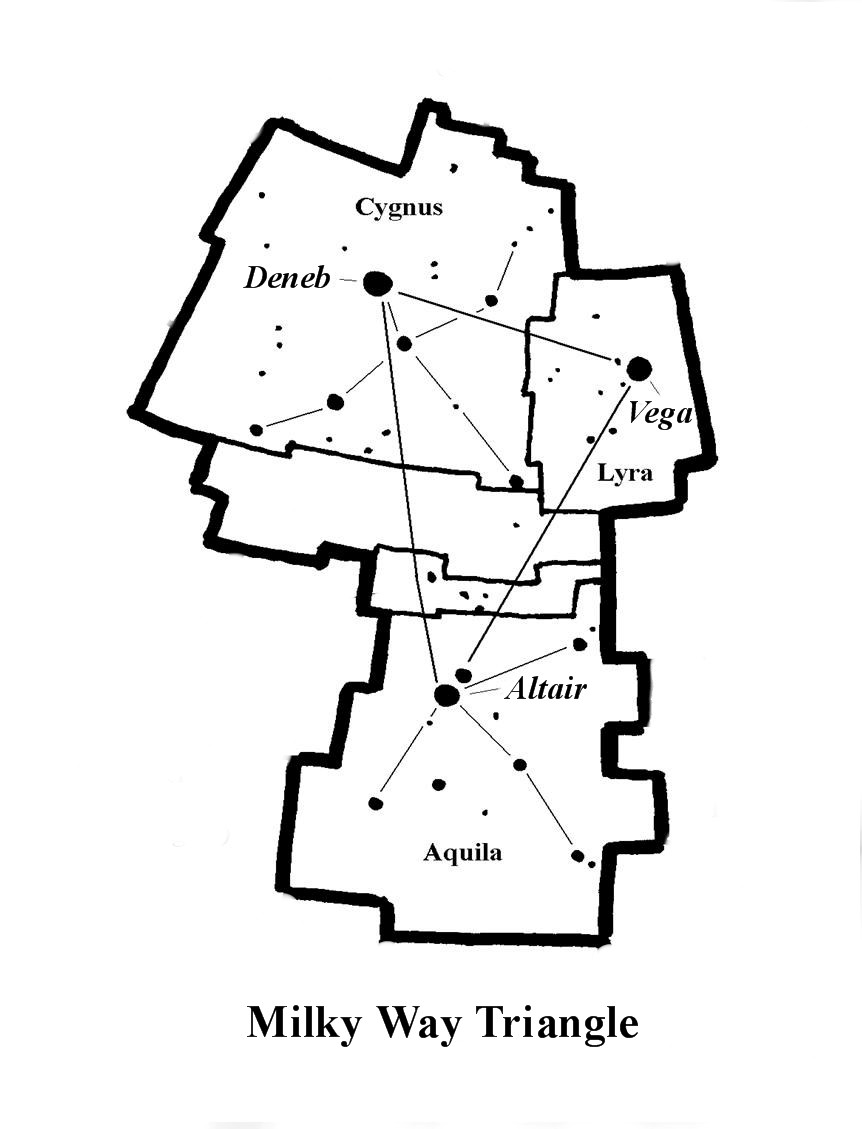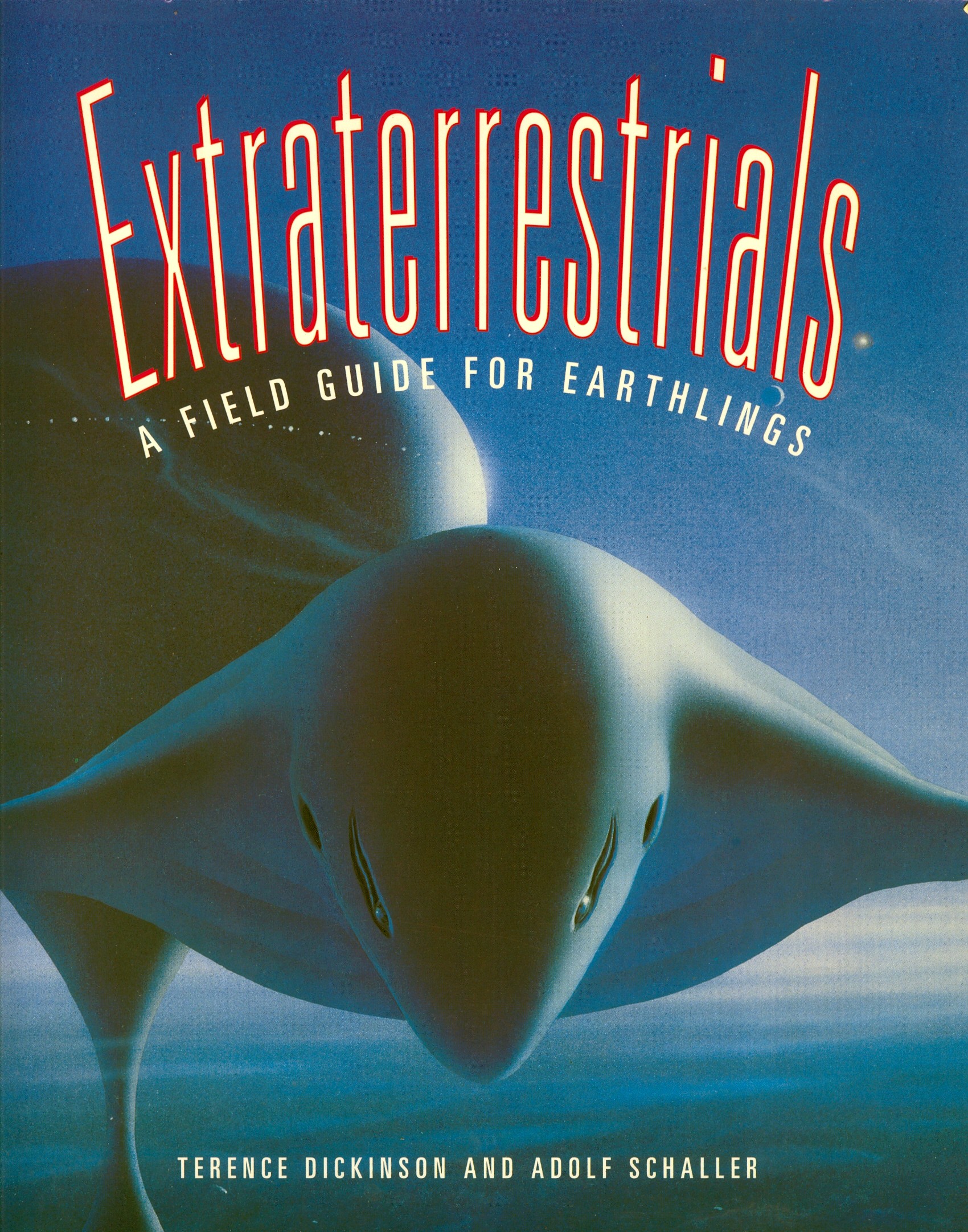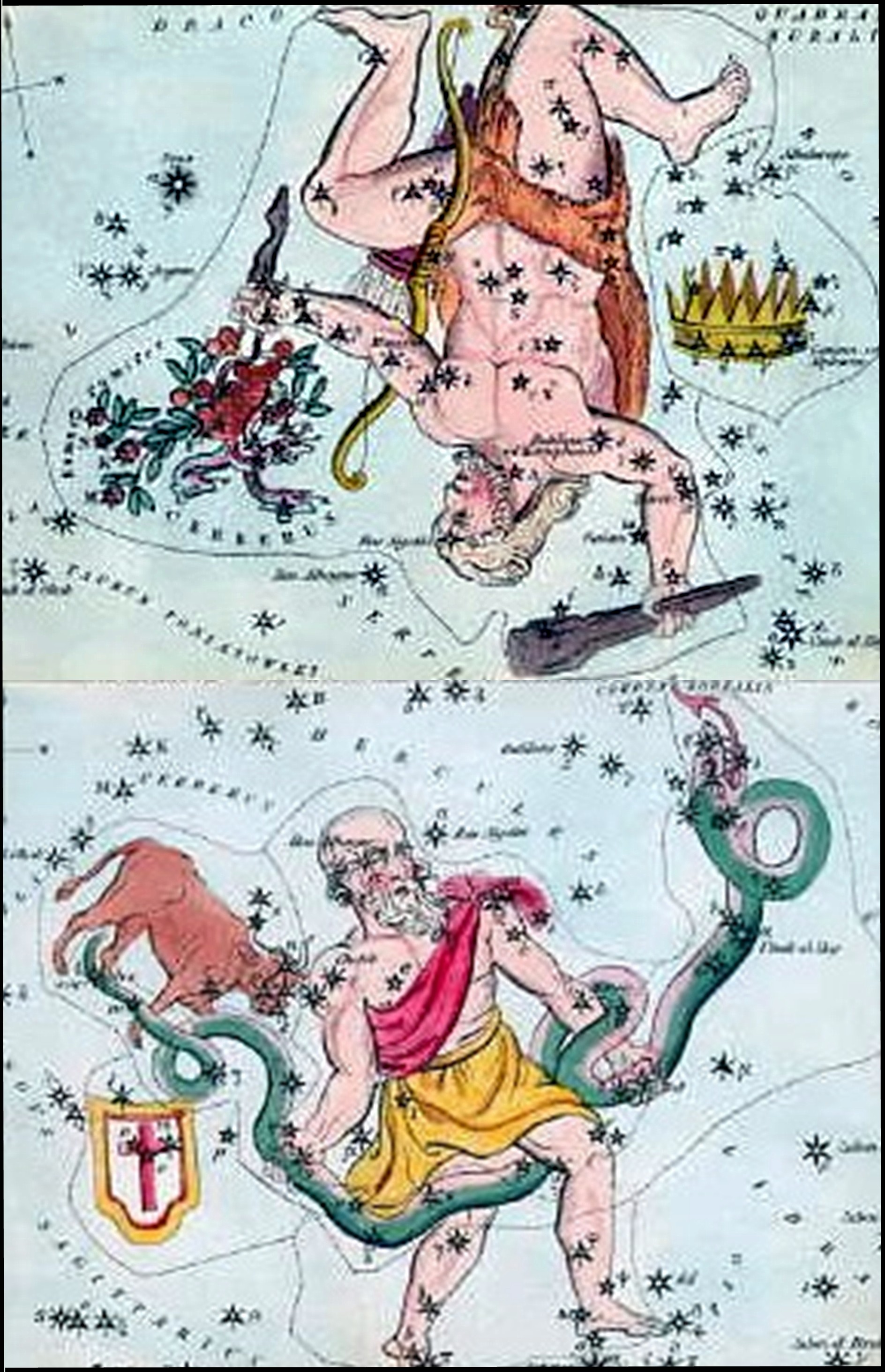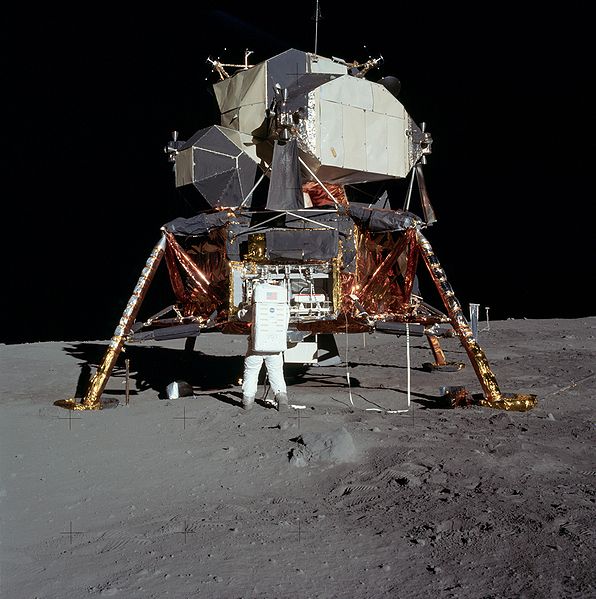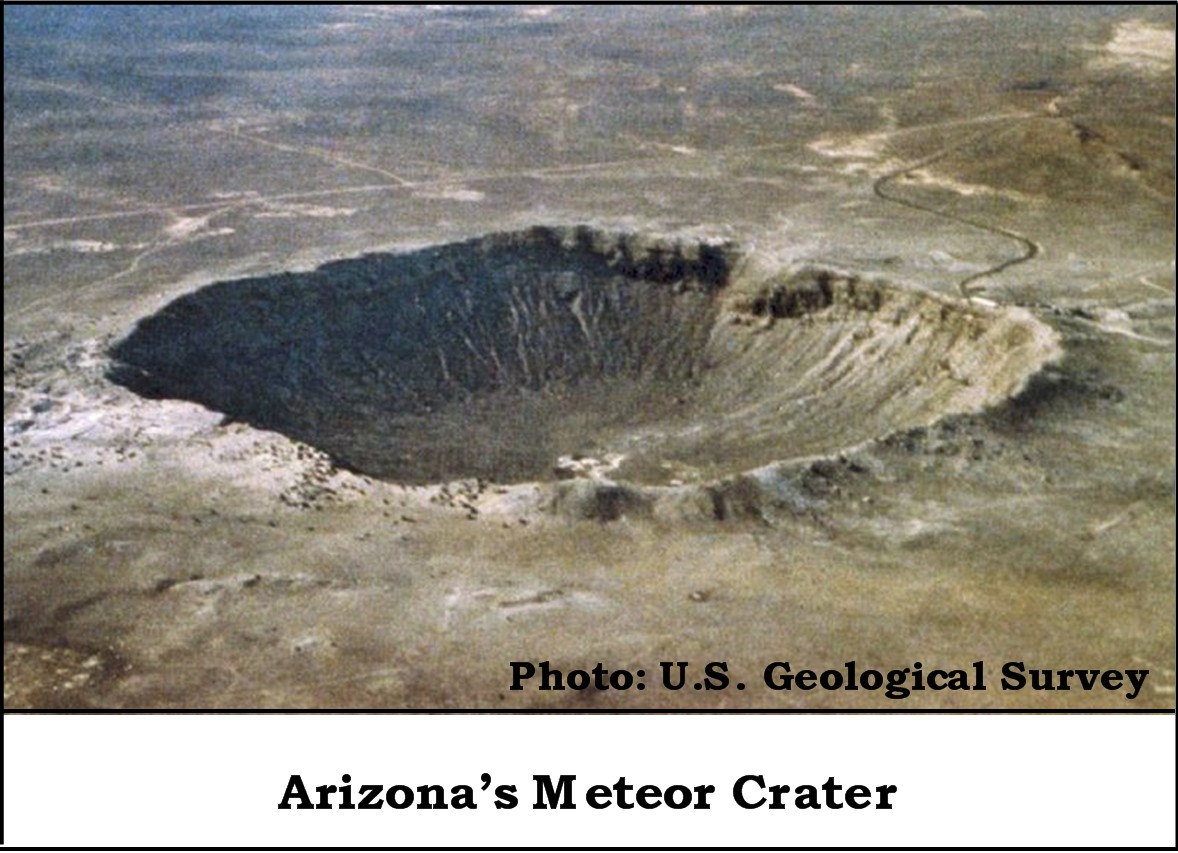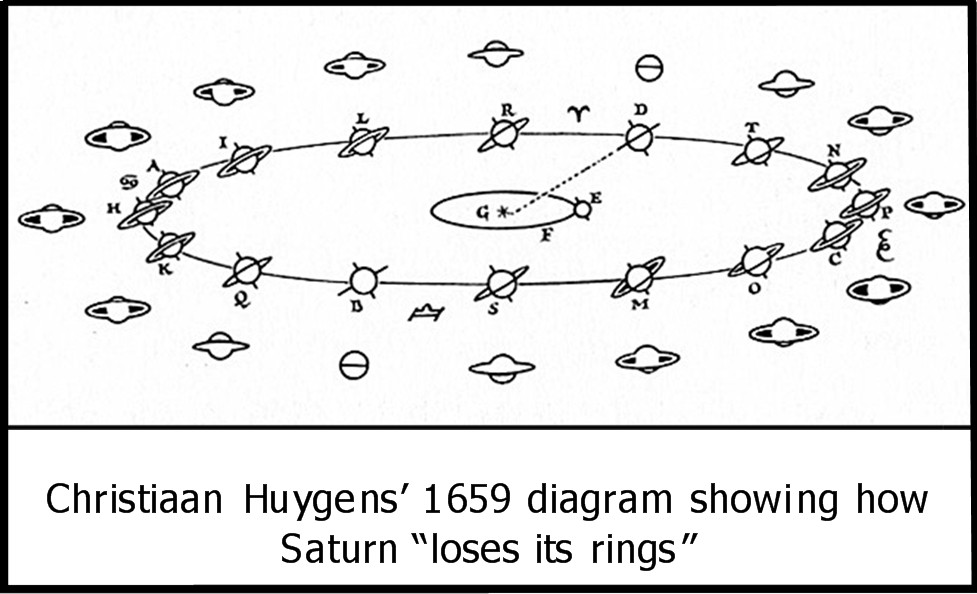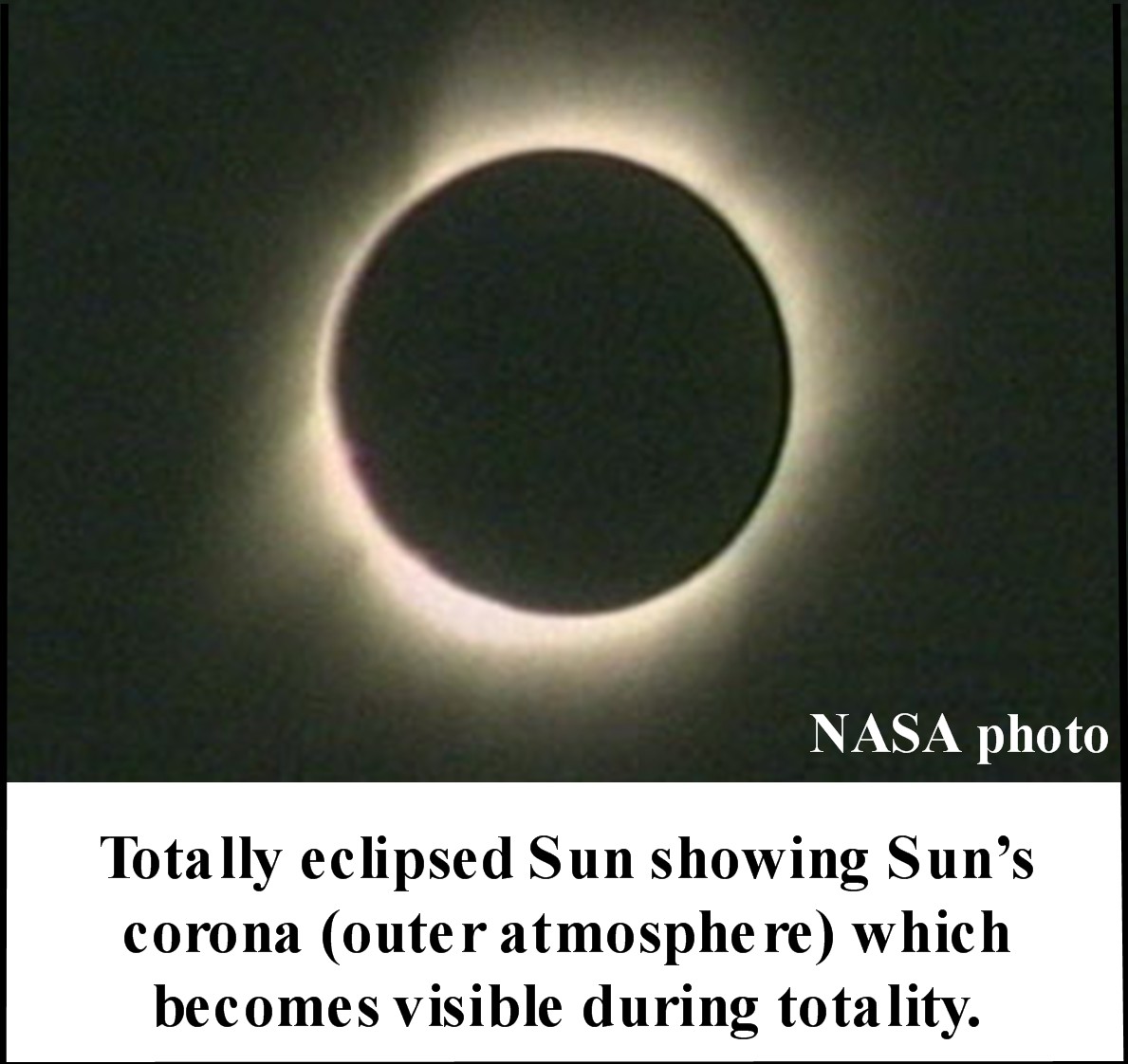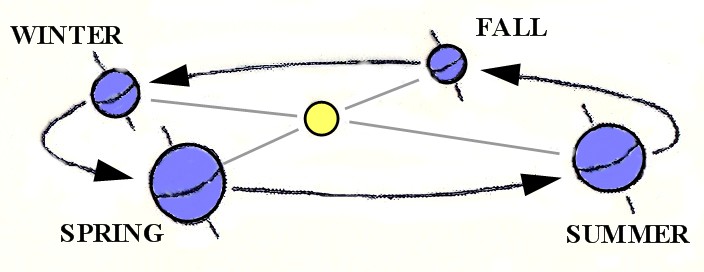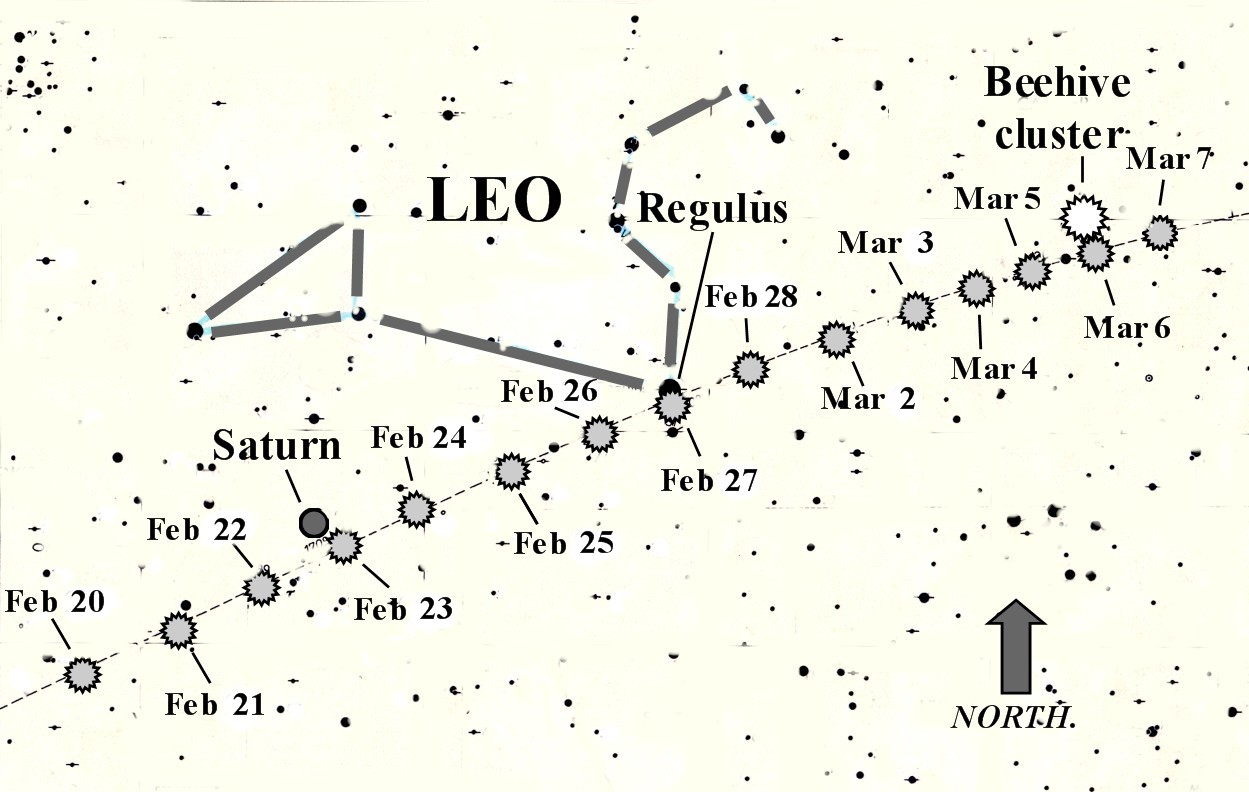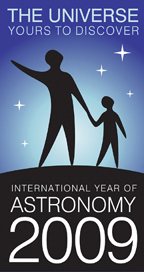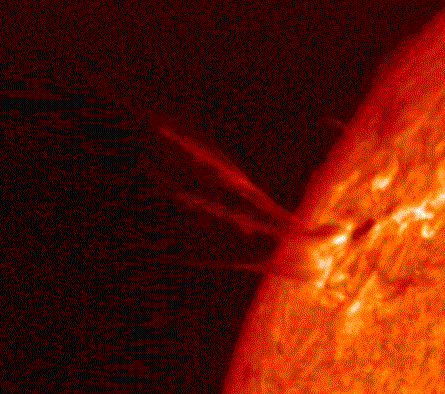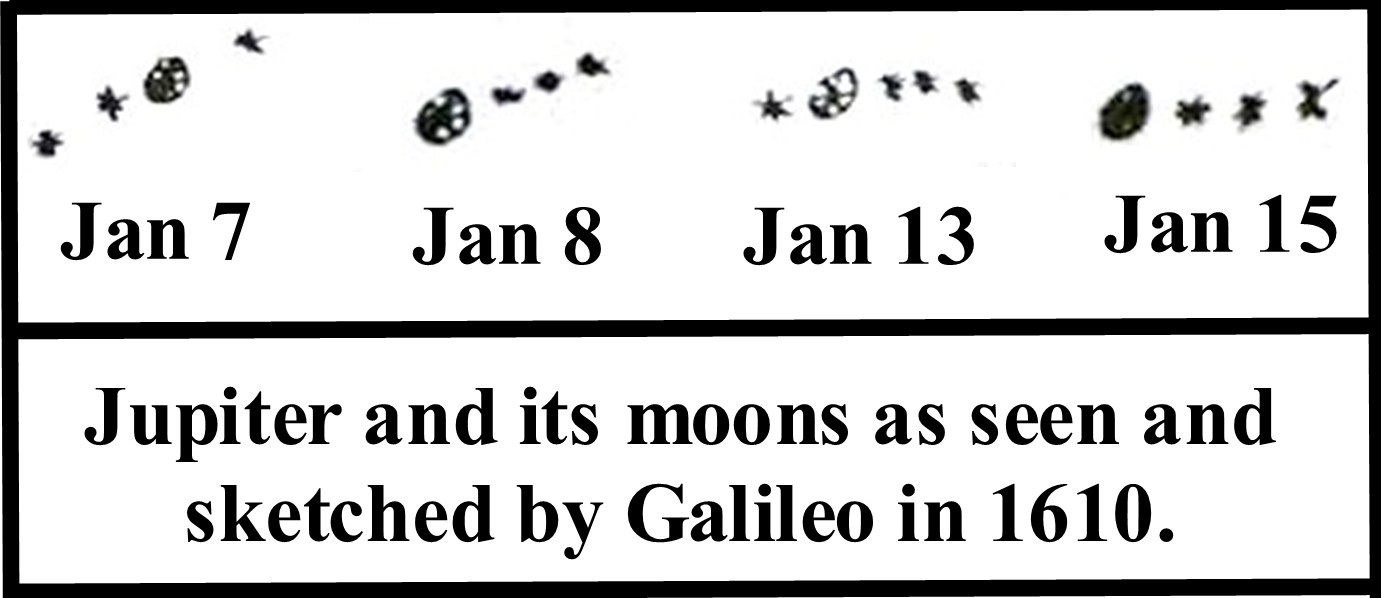Stargazer #499B
Stargazin' and Noticin'
[A version of this Stargazer classic first appeared in April 1991.]
Several years ago I got a letter from a young prison inmate, Beatrice, telling of her newfound interest in stargazing. She said, "Looking up into the heavens gives me a sense of freedom...I plan to enjoy this beautiful universe for the rest of my life."
Her letter reminded me of a story someone once shared with me. During an extended visit in the country, a city fellow came upon a local farmer named Elijah who was standing stock still in the field staring into the darkening twilight sky. With a touch of ridicule, the urbanite said, "Whatcha doin', Elijah?" to which Elijah witheringly replied, "Noticin'."
Indeed, it's hard to imagine the beauty and wonder of the heavens failing to elicit deep feelings and thoughts in those who, like Elijah and Beatrice, notice.
People stargaze for different reasons. Some pursue it like a second vocation. For others it is an enjoyable hobby, or maybe a respite from life's hassles and stresses. But stargazing, like bird-watching and other nature-noticing activities, can be more than mere diversion.
In replying to Beatrice, I acknowledged that while stargazing is certainly enjoyable, I also find it a philosophical activity, both humbling and affirming. Contemplating the unfathomable size of the universe and the probability of countless other beings and civilizations "out there" takes me beyond myself, and can leave me feeling small and insignificant. Yet at the same time, stargazing takes me deep within myself to the very core of my being when I realize that I, too, am a part of this magnificent whole, no less so than any other being.
Roy Bedichek, in his 1947 classic book, Adventures with a Texas Naturalist, wrote, "What a large percentage of urbanized populations miss beginning the day under the spell of the silent, pervasive, leisurely preparations of the heavens to receive the Sun!" That man also knew how to notice.
- Next Two Weeks. Avg. sunrise: 6:57 a.m.; avg. sunset: 6:26 p.m. (exact for Waco, TX)
* Tomorrow (Sunday) morning the crescent Moon (upper right), Mercury, Jupiter, and Mars (lower left) are aligned near the east southeastern horizon 45 minutes before sunrise; binoculars will help.
* Tues. morning Mercury is just below bright Jupiter, and the Moon is new.
* Fri. evening a crescent Moon is just to the left of Venus low in the west at dark.
* The Moon is at 1st quarter Mar. 4.
- Naked-eye Planets. (The Sun, Moon, and planets rise in the east and set in the west due to Earth's west-to-east rotation on its axis.)
Evening: Brilliant "evening star" Venus, looking like a tiny crescent Moon in telescopes, is low in the southwest and Saturn rises before 8 p.m.
Morning: Jupiter, Mercury, and Mars are very low in the east at dawn with Saturn the brightest object in the west.
February 7, 2009
Stargazer #498
International Year of Astronomy
This is a special year for astronomers throughout the world, professional and amateur alike--not for any unusual events in the night sky, but for what will be happening here on Earth.
The International Astronomical Union and UNESCO have designated 2009 the International Year of Astronomy "to foster a global appreciation of the role and value of science and astronomy as a unifying activity for humanity."
With such objectives as "Increase scientific awareness..." and "Support...science education," IYA2009 relates as much to science in general as to the field of astronomy.
And given the attacks on science in recent years (and attacks still occurring in Texas), it couldn't come any too soon. With the theme, The Universe, Yours to Discover, this joint emphasis on science and astronomy is fitting. Astronomy is widely held to be the oldest science, and the fascination so many hold for the cosmos makes it is an excellent vehicle for promoting science.
Consider the Hubble Space Telescope. Not only is it a remarkable scientific tool, but as perhaps the most popular scientific instrument ever built, it is one of astronomy's and science's best ambassadors to the public. In two decades it has dazzled us with hundreds of thousands of images ranging from nearby solar system neighbors to distant galaxies, quasars and other cosmic exotics in the most remote corners of the universe.
Astronomy is one of the few sciences where amateurs still contribute and make discoveries. An example is the partnering of the Central Texas Astronomical Society, an organization of amateurs, with McDonald Observatory and the University of Texas-Austin's Department of Astronomy. Using CTAS's 24-inch research-quality telescope at its observatory outside of Waco, TX, amateurs collect data on white dwarfs which UT astronomers then use in their study of these dying stars.
Why 2009? This year marks the 400th anniversary of the birth of modern observational astronomy when, in 1609, Galileo first used a telescope to study the heavens. It is also the 40th anniversary of the first Moon landing by Apollo 11 astronauts Neil Armstrong and Buzz Aldrin.
To learn about IYA2009 national and global activities, see
www.astronomy2009.org. The IYA2009 page in this website lists places and events in central Texas. For those living in other areas, perhaps your town has an observatory, planetarium or astronomy club hosting events. See see www.skyandtelescope.com/community/organizations for a listing. If you would like to arrange a free public program or star party in your community, contact me (paulderrickwaco@aol.com) and maybe we can work something out.
- Next Two Weeks. Avg. sunrise: 7:11 a.m.; avg. sunset: 6:15 p.m. (exact for Waco, TX)
* Monday's full Moon is the Wolf Moon, Snow Moon, and Hunger Moon.
* Wed. morning the big gibbous Moon is below Saturn, and that evening is to the planet's lower right as they rise around 9 p.m.
* The Moon is at 3rd quarter Feb. 16.
* The morning of Feb. 17 an hour before sunrise Mars is a moonwidth to the right of much brighter Jupiter low in the east with Mercury further to their upper right; also note the Moon to the upper right of Scorpius' brightest star Antares in the south.
- Naked-eye Planets. (The Sun, Moon, and planets rise in the east and set in the west due to Earth's west-to-east rotation on its axis.)
Evening: "Evening star" Venus, appearing as a tiny crescent in small telescopes, is at its brightest in the west, and Saturn rises by 9 p.m.
Morning: Mercury is at its best low in the east at dawn Feb. 7-13 with Saturn the brightest object in the west.
- Comet Lulin. Newly discovered Comet Lulin, now rising in the east before midnight, appears as a subtle fuzz ball in binoculars. Traveling east-to-west along the ecliptic (the path of the Sun, Moon and planets) and rising earlier each night, it passes near Virgo's brightest star Spica Feb. 15 and 16, Saturn Feb. 23, Leo's brightest star Regulus Feb. 27, and the Beehive star cluster Mar. 4 and 5. Under dark skies, it might become naked-eye visible the last week of Feb.
- Star Party. The Central Texas Astronomical Society's free monthly star party is Feb. 14 at the Waco Wetlands beginning at 7 p.m., weather permitting. For directions to the Wetlands, see MAPS & DIRECTIONS elsewhere in this website.
January 24, 2009
Stargazer #497
That Lucky Old Sun
In a 1949 #1 hit song, Frankie Laine crooned "that lucky old sun has nothin' to do but roll around heaven all day." I like the song, but with all due respects to Frankie, it just ain't so.
In fact, the Sun is an incredible workhorse that's on duty 24 hours a day, 365 days a year, doing the job it's been doing for 5 billion years and will continue doing another 5 billion, give or take a few hundred million years. And we can thank our lucky stars that it is for without the Sun we wouldn't be. Should the Sun suddenly go out--which it won't any time soon--we would go out with it, and very quickly.
It's easy to take the Sun for granted, and during hot summer days we might even find ourselves having bad thoughts about it. Yet all we have to do is imagine a frozen, dark Earth, and we promptly become Sun-appreciators. But providing warmth and light to see by is just part of the Sun's job.
Animal life depends upon plant life for survival. Chlorophyll-containing green plants--which include virtually all the plants we eat--require light for photosynthesis, the process by which they live and grow--and that light directly or indirectly comes from the Sun. Photosynthesis also converts the carbon dioxide we breath out into the oxygen we need to breathe in. So, no Sun, no plants. And no plants, no plant-eating, oxygen-breathing animals--and thus, no us.
The Sun is also the mother of all energy generators. According to Wikipedia, the amount of solar energy reaching Earth in an hour is more energy than the world uses in a year. And the solar energy reaching Earth in a year is twice the total amount of energy we could ever obtain from all of Earth's non-renewable resources--coal, oil, natural gas, and uranium--combined.
So it turns out that our "lucky" old Sun really has a lot more to do than just roll around heaven. But as essential as it is, it also has its darker side, so to speak.
The radiation that provides all the life-giving benefits also has destructive powers. Sun burns, skin cancers, cataracts, and heat strokes are but some of the ways the Sun is harmful to us. And that same radiation--mostly ultraviolet--that damages us also breaks down and destroys many products we rely on daily, like paint, rubber, plastic, and roofing.
And if that's not enough, our star of life and energy will eventually become a death star of destruction. In the last stages of its life, the Sun will expand, becoming so huge that Mercury, Venus, and Earth will be vaporized and consumed. All Earth-bound life that still exists in 5 billion years will be extinguished by the very star that made life possible.
So that hardworking "lucky" old Sun is a mixed bag, deserving both our gratitude and our wary respect.
- Next Two Weeks. Avg. sunrise: 7:22 a.m.; avg. sunset: 6:02 p.m. (exact for Waco, TX)
* Monday's new Moon produces an annular solar eclipse not visible from our hemisphere.
* Friday evening a crescent Moon is above Venus.
* Feb. 2 is Groundhog Day and Candlemas, a cross-quarter day celebrating the middle of winter, and the Moon is at 1st quarter.
- Naked-eye Planets. [The Sun, Moon, and planets rise in the east and set in the west because of Earth's west-to-east rotation on its axis.]
Evening: Brilliant "evening star" Venus is now at its highest in the southwest at dark, and Saturn is up by 9 p.m.
Morning: Saturn is high in the west southwest, and by early February Mercury begins appearing very low in the east southeast at dawn.
January 10, 2009
Stargazer #496
Jupiter's New Moons
According to popular lore, scientists, upon making a discovery, are supposed to exclaim, "Eureka!" However, it's said that, in reality, they are more apt to muse to themselves, or comment to a colleague, "That's funny!" And judging by his notes, that was Galileo's reaction nearly 400 years ago when, using his new telescope, he made the earthshaking discovery that Jupiter has moons.
The night of Jan. 7, 1610, upon seeing a magnified Jupiter for the first time, he noticed "three little stars" which he assumed to be ordinary background stars. "Yet," as he wrote, "they made me somewhat wonder because they seemed to be arranged exactly in a straight line, parallel to the ecliptic."
The next night, he "found a very different state of things, for there were three little stars all west of Jupiter." Curious, he "waited for the next night with the most intense longing, but was disappointed for the sky was covered with clouds."
Over the next several nights, he was able to make observations and each time saw the "stars" in a different pattern. At this point his brilliance and ability to think outside the box came into play, enabling him to infer what he was seeing--and it flew in the face of what was believed about the heavens at that time.
He wrote, "I therefore concluded, and decided unhesitatingly, that there are three stars in the heavens moving about Jupiter, which was established as clear as daylight by numerous other subsequent observations." He even determined "that there are not only three, but four, erratic sidereal bodies performing their revolutions around Jupiter."
His discovery was earthshaking because the prevailing scientific and theological world view held that all heavenly objects orbited Earth which was at the center of the cosmos. Galileo's discovery of bodies orbiting Jupiter provided visual evidence in support of the heretical Copernican theory that the Sun was at the center.
Galileo's four new "stars," which he called Medicean planets, are now named Io, Europa, Ganymede, and Callisto, and are called Jupiter's Galilean moons in his honor.
There's an irony related to Galileo's discovery. As he focused his attention on Jupiter, the planet Uranus, which would not be discovered for another 171 years, was less than 3 degrees away. However, with his crude telescopes, and given Uranus' distance, faintness, and slow movement against the background stars, it is unlikely he would have recognized it as a planet. But if he had, perhaps he would have shouted, "Eureka!"
- Next Two Weeks. Avg. sunrise: 7:28 a.m.; avg. sunset: 5:50 p.m. (exact for Waco, TX)
* Tonight's full Moon is called Moon After Yule and Old Moon.
* Thursday morning, the gibbous Moon is to the lower left of Saturn.
* The morning of Jan. 17 the 3rd quarter Moon is to the right of the star Spica.
* The crescent Moon is just to the lower right of the star Antares the morning of Jan. 21.
- Naked-eye Planets. Evening: "Evening star" Venus is brilliant in the southwest with Mercury the brightest object low in the west southwest at dark. Morning: Saturn is the brightest object high in the southwest before dawn.
- Star Party. The Central Texas Astronomical Society's free monthly star party is Jan. 17 at the Waco Wetlands beginning at 7 p.m., weather permitting. For directions to the Wetlands, see MAPS & DIRECTIONS elsewhere in this website.
